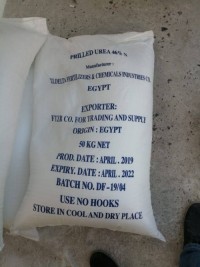


Fertilizer urea can be purchased as prills or as a granulated material. In the past, it was usually produced by dropping liquid urea from a “prilling tower” while drying the product. The prills formed a smaller and softer substance than other materials commonly used in fertilizer blends. Today, though, considerable urea is manufactured as granules. Granules are larger, harder, and more resistant to moisture. As a result, granulated urea has become a more suitable material for fertilizer blends.
| Main specifications | Norm | ||
|---|---|---|---|
| Urea Prilled | Urea Granulated | ||
| Mass portion of nitrogen (N) on a dry basis, %min | 46.2 | 46.2 | |
| Mass portion of biuret, %, max | 1.0 | 1.0 | |
| Moisture (determined by Fischer method), % max: | 0.5 | 0.5 | |
| Granulometry, % | 2 to 5 mm | - | 95 |
| 1 to 4 mm | 90 | - | |
| less than 1 mm | - | 2 | |
| more than 6 mm | none | None | |
| Color | white | white | |
| Static Strength | - | 2.5 kgs/granule | |
| Product free flowing, free from dust and harmful substances Urea is a non-combustible, fire and explosion proof substance | |||